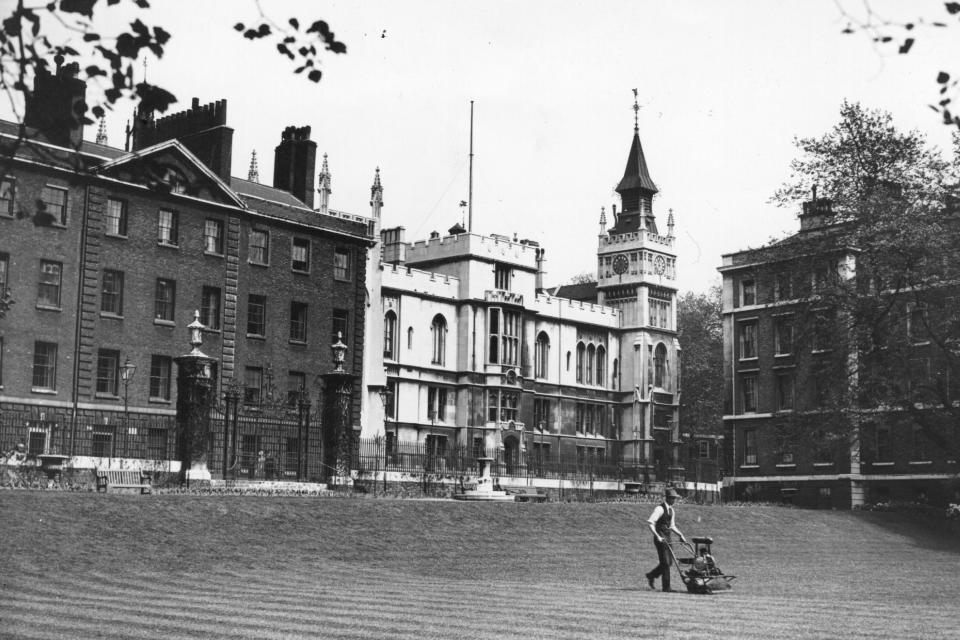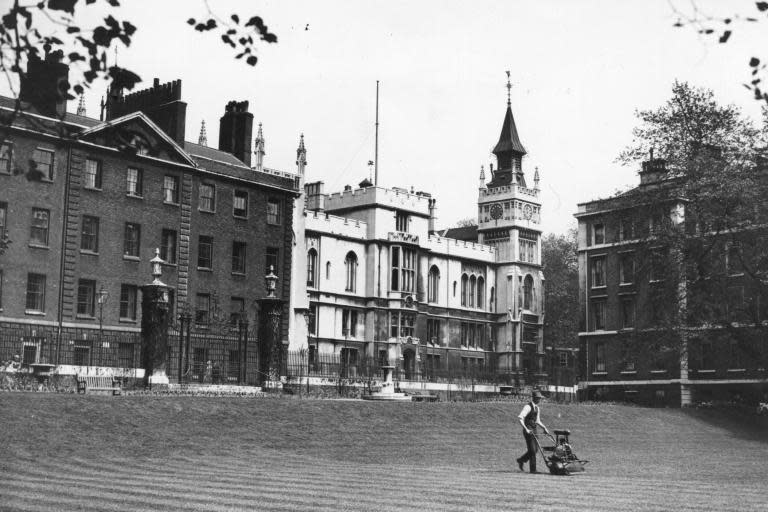The Reader: The Inner Temple Library should not be disfigured
Even before victory in 1945, plans had begun to repair and rebuild many fine buildings destroyed during the Blitz. Over more than 10 years the War Damage Commission spent some £300 million on righting the damage done.
One of the largest single beneficiaries were the Benchers of the heavily bombed Inner Temple south of Fleet Street. The cost of reconstruction of the Inn was £1.5 million, of which the Commission paid £1,432,082, leaving the Benchers to find just £110,887.
These generous funds went towards the restoration of the famous Temple Church, the Hall and the Library and other nearby buildings. So why is it that the Governing Benchers are now bent on disfiguring the beautiful Inner Temple Library, a superb example of a tripartite college library in the manner of Sir Christopher Wren, obliterating the mezzanine galleries with their beautiful oak balustrades and the heads of the baroque doorcases? The architect of the present library, T W Sutcliffe, had repeatedly revised the designs to achieve a beautiful result at a price the War Damage Commission would pay for.
The Benchers have until December 20 to vote. They should retreat from this squandering of the generous sums of public money they received.
Marcus Binney
SAVE Britain’s Heritage
EDITOR'S REPLY
Dear Marcus
The Inner Temple is one of London’s hidden gems: a working environment of course, but an extraordinary place by any reckoning, not least in its remarkable Temple church — perhaps the only thing we have to thank Dan Brown for is that he brought it to the attention of millions.
The architecture of the place is not merely the responsibility of the Benchers but something that we all have an interest in. And if, as you say, they are allowing an inept and clumsy revision of the Wren-style library, it is an abnegation of their responsibility as its custodians.
English Heritage and other architectural preservation bodies should intervene now to remind the Benchers of their duty of care, especially since, as you remind us, they had substantial public funding after the war to restore their buildings.
Melanie McDonagh, Senior Writer
Few tickets to ride after McCartney
Paul McCartney’s superb concert on Sunday night at the O2 finished in a disaster for up to 20,000 spectators.
The show finished at 23.10. By the time the crowds were permitted by the crowd management to reach North Greenwich Tube, it was midnight. There was no westbound Tube and only a couple of eastbound trains at intervals of 12 minutes. There were chaotic scenes of people trying to storm the few buses and cabs.
Who decided it was a good idea to finish the Sunday show so late? Who made sure there were no westbound Tubes, while well aware of the thousands of people that were stranded? We were forced to battle onto the last Stratford-bound train, then take a night bus to Oxford Circus, then walk. By the time we got to Bond Street it was 1.45 am.
Thank you, TfL, for ruining the night out.
Vassilina Bindley
Electric bikes have their advantages
Further to Paul Casey’s letter, if by “motorised cycles” Mr Casey is referring to electric bikes, the definition by law is that they are pedal assisted, and speed restricted [“Motorising cycles misses the point” December 17].
That is, you still have to pedal, and thus it still counts as exercise. True, it is less intense exercise than riding a standard bike, but for those of us who are elderly, need to go a longer distance, or have a hilly route to work and no suitable place to shower, they’re a good option.
The health benefits of this low-intensity but longer-duration exercise are, I imagine, similar to those gained by walking.
No doubt running everywhere would bring greater health benefits than walking, but encouraging walking on health grounds is still more than reasonable.
Zoe Kelly

 Yahoo News
Yahoo News 

